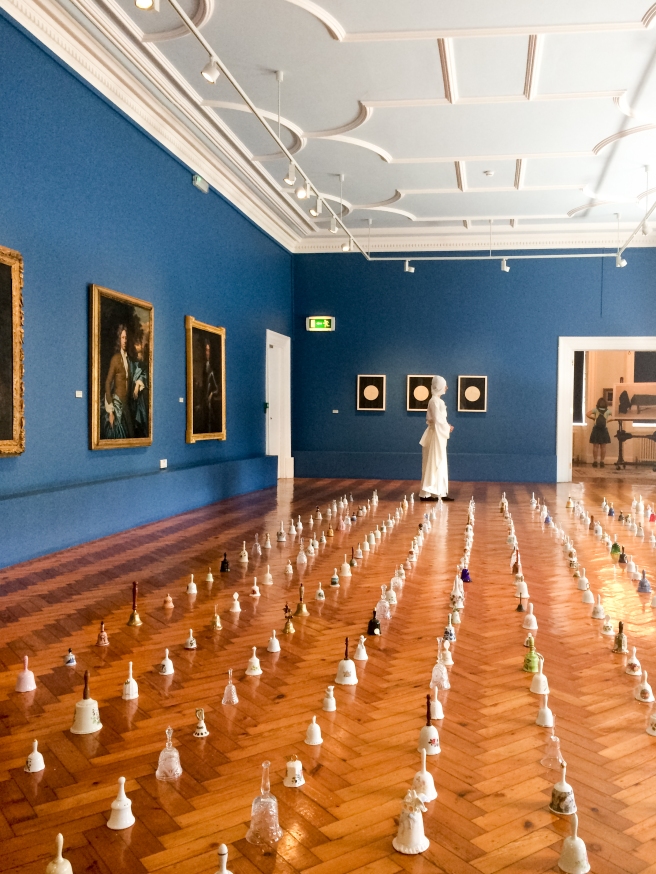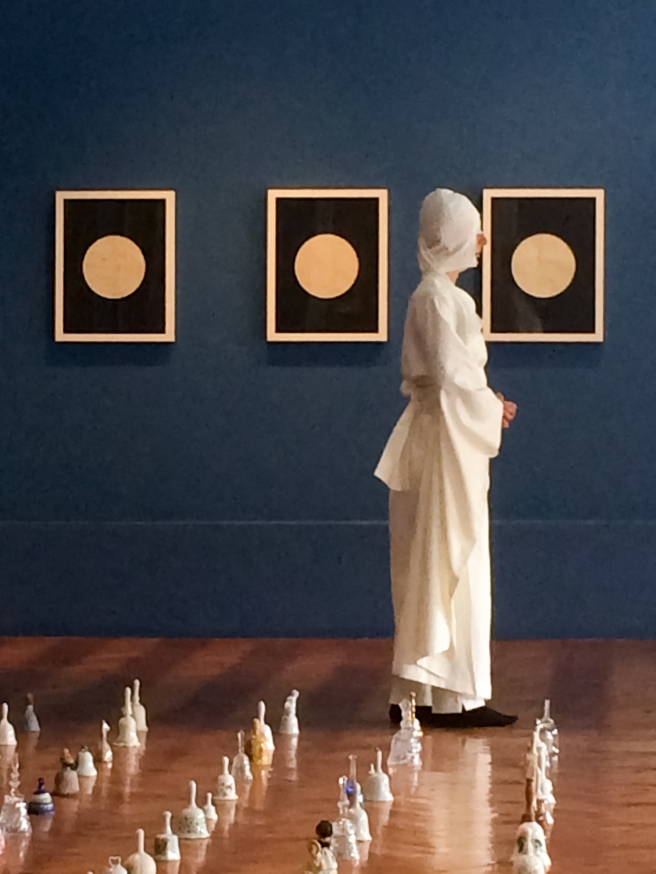by Jack Beglin
I meet Rhiannon Armstrong on the Corner of Mary’s Lane and Bow Street. She is wearing navy blue overalls and is with her minder, Jacky. She carries two yellow caution signs with the logo of a sleeping stick figure and the caption ‘It’s ok we’re just resting’ printed on either side of the plaques. This is Public Selfcare System at the 2017 Dublin Live Art Festival.
As we turn the corner onto New Church Street and into Smithfield Square, Rhiannon explains that she has been suffering from chronic migraines for the last three years. She describes herself as ‘an expert at the durational performance of thriving in a world geared against our survival’ . She has developed a strategy in order to ensure a better quality of life. This strategy she shares with me on our one-to-one encounter.
First we will lay together in a public space, at which point Rhiannon will ask for permission to touch me on the shoulder. She will then whisper into my ear and then ask if it is ok to leave me to rest alone in the public space for fifteen minutes. We make our way to Smithfield Square opposite the Light House Cinema and stand between two large flower pots. Rhiannon leads a personal ritual.
‘On the count of three we will sit down together’ Rhiannon says as we look out at the derelict building in the distance.
‘One, two, three.’ We are now sitting together. I feel the cold of the ground creep up my spine.
‘I will now place this mat on the ground for you to lay on and you can rest your head on this’ Rhiannon explains, as she uncoils a pair of blue pants from her neck and places it at the top of the small purple yoga mat.
‘One, two, three.’ I am now looking up at the blue sky framed by a sliver arc shaped street lamp.
‘On the count of three we will turn to our left side. One, two, three.’ My vision is now horizontal as I see a pair of Adidas tracksuit bottoms creep their way towards me from the distance. I take shelter behind the darkness of my eyelids.
‘May I touch you on your shoulder?’ Rhiannon asks.

I agree. The man in the Adidas tracksuit bottoms is now intercepted by Jacky and gently directed away from me.
‘This is your time to rest. It is ok to rest, you deserve this time to rest,’ Rhiannon whispers as I am lulled into a daydream. Time passes, the sounds of children playing pass and people come and go as I seek refuge behind my eyes.
‘Jack, may I leave you now?’ Rhiannon asks.
I agree and as I feel her touch release from my shoulder a sense of vulnerability passes over my body. Time passes, the sound of the Luas Tram signals in the air as a flock of pigeons scuttle from one side of the square to the other. I mark time by the sound of passing footsteps.

Rhiannon gently touches me on the shoulder; ‘it’s time’ she says as I slowly rise to standing. Jacky is in conversation with a man in a flat cap. I approach the man. Tears well in his eyes as he rolls a cigarette with grubby fingers. Rhiannon asks me how my experience was. I say that it was nurturing to be resting with her, but then I felt a sudden venerability being alone. In a small way I could understand what it is like to be homeless. The man in the flat cap places the cigarette in his mouth. He shakes my hand. ‘I’ll say a prayer for ya’ he says. I say goodbye to Rhiannon, Jacky and the man in the flat cap as I make my way towards Bow Street.
Public Self-Care system is a site specific one to one performance that draws attention to the relationship between the body and public space. The ‘costume’ Rhiannon wears and the ‘set design’ of the yellow caution plaques are theatrical. They draw the attention of the spectator and frame the interaction between Rhiannon and the participant ‘as performance’. Framing this interaction in such a way creates an ‘extra -daily’ space where the spectator’s habitual to and fro is temporarily suspended. In Brechtian terms a verfremdungseffekt, or alienation effect, is created. The spectator double takes and as a result has the opportunity to consider the implications of what is happening in the space – the private act of resting in a public area.
I had the opportunity to empathise with Rhiannon. I understood though my body the implications of her illness and the strategy she employs to combat it. In a small way the experience illustrated to me the kind of vulnerability that homeless people may feel by exposing their private and intimate acts in public. I can’t for a minute say that I understand the full embodied and existential experience of homelessness, but Public Self Care System brought me one baby step closer to the experience of vulnerability in public space.

Rhinnon Armstrong performed Public Selfcare System on 18 August as part of the 2017 Dublin Live Art Festival, curated and organised by Niamh Murphy and Francis Fay. Images by Fiona Killeen (www.blueprintphotography.ie)

















